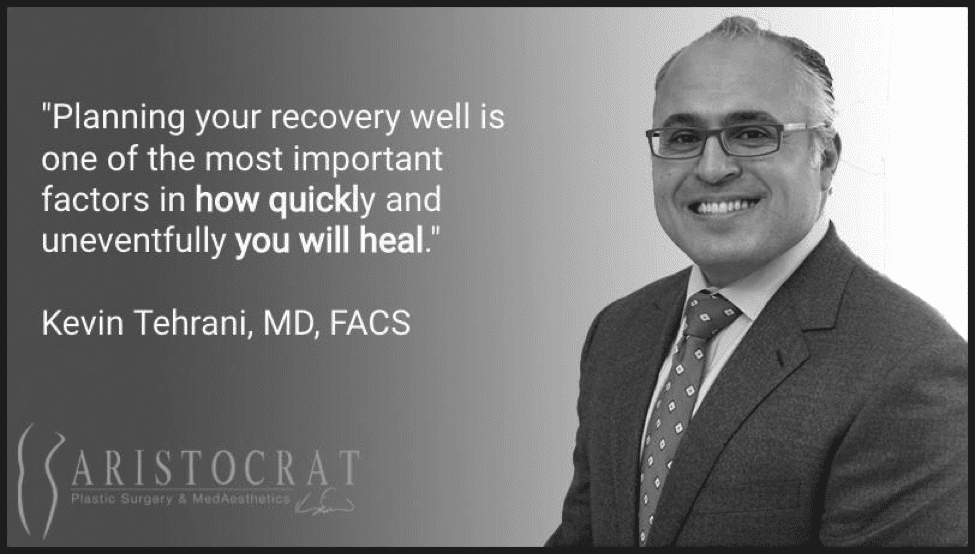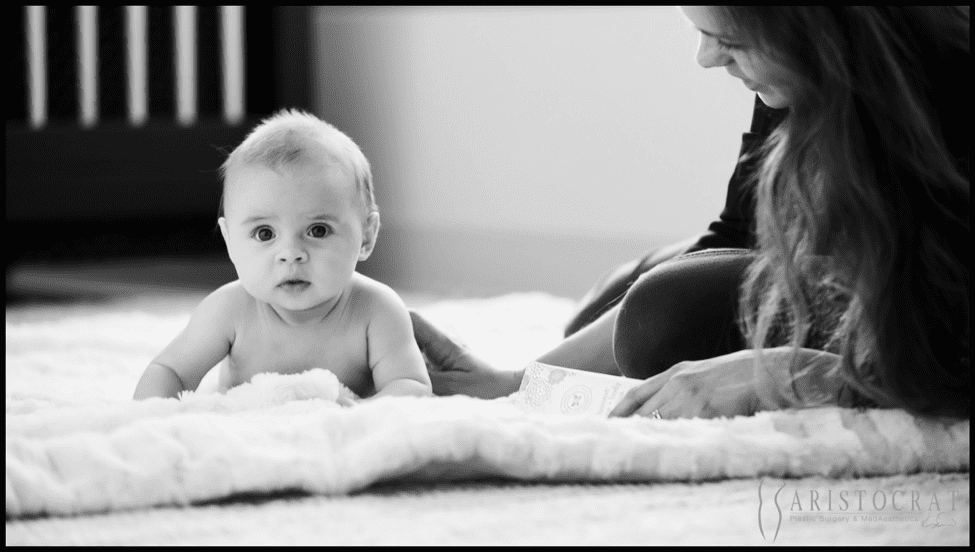How Does Liposuction Work?
How Does Liposuction Work?
Being one of the most popular plastic surgery procedures for more than a couple of decades, it’s surprising how misunderstood liposuction still is. Time to shed some light on the matter.
Liposuction can do wonders for the right patient. The stubborn underarm fat, the love handles that do not seem to go away, no matter how many gym hours you put in or how many broccoli you eat—liposuction is designed to sculpt inches off places where the inches don’t want to move.
Compared to more major procedures—such as tummy tuck—liposuction is a conservative alternative. As such, it requires only a small incision, which leaves a barely visible scar.

It is important to understand that liposuction cannot produce a dramatic, global change. It does not involve skin removal/tightening procedures, which are necessary when large amounts of fat are removed. Liposuction does not tighten underlying muscles after fat removal.
What Is Liposuction?
Liposuction is a cosmetic procedure designed to tackle stubborn fat pockets that do not seem to respond to diet and exercise.
Plastic surgeons and dermatologists usually perform procedures on the following body areas:
- Hips
- Abdomen (belly fat, love handles)
- Thighs (both inner and outer thighs)
- Buttocks (mommy butt)
- Back (folds of fat on the back)
- Arms (“hanging” underarm fat)
- Face (double chin)
The procedure is frequently combined with other types of plastic surgery, including facelift, breast reduction and tummy tuck.
Who Is a Good Liposuction Candidate?
First and foremost, it’s important to set realistic expectations for liposuction patients.
Liposuction is not a weight loss procedure, so for patients whose primary goal is to lose weight liposuction should not be the primary option. As the procedure does not involve tightening of the underlying muscle tissue and skin removal/rejuvenation, liposuction does not offer significant weight loss options. In fact, it is required for liposuction patients to maintain a stable weight before undergoing the procedure.
Liposuction is also not an option for women seeking options to treat cellulite. The condition called cellulite is an uneven distribution of fat, aggravated by skin stretching. Since liposuction does not provide skin tightening options, it is not a viable treatment for “cellulite patients.”
It is also important to mention that liposuction is a surgical procedure, which means that there are risks involved. As a general rule, a good liposuction candidate is someone who:
- Is within 30% of their ideal weight. There are many reasons why this is important, with the main one being the final success of the procedure. Liposuction is best described as body sculpting, not fat removing procedure. The success of a liposuction surgery is measured in inches, not pounds. Therefore, overweight patients will simply not find the answer to their issue in the procedure. Obesity is also associated with a higher risk of surgical complications.
- Has firm, elastic skin. Skin laxity and elasticity are extremely important when evaluating the long-term impact of liposuction on the patient’s appearance. The main problem is that patients with saggy, stretched out skin might end up with folds of fat in the treatment site after the procedure. Not only this is extremely unappealing, it can also be dangerous—as bacteria can accumulate under the fat folds—and will require subsequent treatment.
- Does not smoke. Smoking is a big no-no in the surgical world. Consistent smoking slows down the blood flow in your body, increasing the chance of a blood clot forming—a possibly fatal incident. For smokers, surgical wounds also take longer to heal, which increases the chance of an infection. While it depends on the doctor, the general rule of thumb is to refrain from smoking at least 30 days before and 30 days after the procedure; quitting altogether is, of course, the optimal scenario.
- Does not have a history of blood circulation and heart diseases or immunodeficiency disorders. This one goes without saying—surgeons will carefully examine your medical history to make sure there are no risks related to existing medical conditions.
Things to Know During the Consideration Stage
One of the most important things you’ll do during your plastic surgery journey is consult with your surgeon. You’ll discuss your goals, limitations, risks, benefits and costs. Your doctor will ask you a range of questions to offer a treatment plan that precisely matches your expectations.
It is extremely important to be completely open with your surgeon. Patients are not expected to know how to achieve a certain appearance—it’s the surgeon’s job to offer the means to the goal. If you insist on the wrong procedure right off the bat without walking the surgeon through your thought process, you might end up getting a procedure that is not only a mismatch for your expectations, but also potentially dangerous for your body.

Remember, nobody is judging you for what you want, and what you say in the office will remain between you and the surgeon.
Likewise, it is imperative that you ask the surgeon any questions that come to your head. Do not be shy—be aggressive in your inquiry. Choosing the right surgeon—someone who is both qualified and committed to your best interests—is the single most important decision you’ll make during your transformational journey.
If you do decide to proceed with a particular surgeon, ask them any questions you may have in regards to the preparation, logistics and recovery. Liposuction is roughly a month-long journey. Patients usually get back to work within 2 weeks of the procedure, but most feel like they’ve recovered after the first month.
Your doctor will also provide you with guidelines and instructions. Certain foods, beverages, medications, supplements and even activities may be restricted by your surgeon for a time period before and after the procedure. It is important to put safety first and take these instructions as gospel.
The patient’s job here is to be as open and honest as possible. It is estimated that around 50% of patients lie to their doctors about the medications they take. Don’t do that. Mention any medications you take, and in what regimen—including supplements and herbal remedies. Chances are your surgeon will ask you to restrict certain medications for the time being—for example, blood thinning drugs and painkillers. Do not take offense in these guidelines—they will help you go through your plastic surgery journey without unplanned surprises.
What Can You Expect?
As we mentioned previously, choosing the right plastic surgeon will be the single most impactful decision you’ll make while seeking liposuction treatment. Make sure your surgeon of choice is board-certified, trusted and has lots of good reviews. If any negative testimonials are present, study them carefully. Read them with a pinch of salt—negative experiences often occur due to the patient’s behavior.
Plan the day of your procedure in advance. During the surgery, you’ll be administered general anaesthesia, which means you’ll be fully asleep. While this minimizes the discomfort during the procedure, the anaesthesia does take time to wear off. Patients feel weak, sleepy, dizzy and disoriented after the surgery. Sometimes, the feeling of nausea is present. That’s why it’s necessary to have someone take you home after the procedure and help you through the rest of the day. Ideally, you’ll have someone help you around the house for the next couple of days after the procedure.

Make sure to arrange meals for at least 48 hours after the procedure. Cooking is the last thing you’ll want to be doing while recovering from surgery, and the first days are the roughest. Options include cooking meals in advance, having a friend or a family member to cook for you, or simply ordering takeaway.
Responsibilities such as children, pets and house chores should also be carefully considered before the procedure. Plan for a week-long in-house stay. Sleep is extremely important for your recovery, so plan your first recovery week in a way where you literally don’t have to do anything but stay in your bed and rest.
No less important is creating the perfect healing space for a quick and uneventful recovery:
- Tidy up. Post-op patients feel fragile and weak. Make sure there aren’t any kids’ toys lying around the house that you could accidentally slip up on. Also, turn your house into a temple of emotional safety and comfort—which means that there’s no mess that’s stressing you out—a mess that you’ll feel compelled but unable to take care of.
- Reorganize. During your recovery, you won’t feel like getting on a chair to reach the pack of tea on the top shelf. Make sure everything you need for your day-to-day existence is easily accessible. Take the book you wanted to read but left in the luggage 3 weeks ago out and put it onto the drawer next to your bed. All the things you might need—the charger, the phone, the laptop, the scarf, the notepad—make sure they’re within an arm’s length.
- Get some plants. You read that right—multiple studies have found that plants have “magical” healing powers. Some flora in your room will help you calm down and relax—which, in turn, will help you sleep and recover quicker. Stress is your worst enemy during those couple fragile weeks.
Before the procedure, the surgeon will mark your body with a marker—to indicate the treatment site. Pictures may be taken, and 3D visualizations can be generated to visualize the potential outcome. With your consent, the pictures may be used to demonstrate the before-after effects of liposuction.
Lastly, there are a few things to keep in mind on the big day:
- Do not shave or wax the surgical site 24 hours before the procedure. While your surgeon will likely give the same guideline, it is important that you take this precaution yourself. This is important because shaving or waxing can cause ingrown hairs within your skin, which can increase the chances of an infection during your recovery.
- Wear comfortable clothes. The whole liposuction process will take a few hours, so make sure you wear something loose and comfy. Do not wear tight and uncomfortable clothes for the procedure. Take every bit of comfort you can get during this stressful event.
- Driving to and from the procedure. We’ve already mentioned that you won’t be able to drive home yourself, and that someone will have to take you home from the clinic. This means that someone will have to drive you to the clinic as well, as you don’t want to leave your car parked near the clinic. Public transport or taxi are out of the question after general anaesthesia, since you’ll be slightly disoriented and in a weakened state.
What Kinds of Liposuction Are There?
There are several slightly different liposuction techniques available, however they all work under the same general principle:
- A tiny tube (called a cannula) is inserted through a small incision in the treatment site
- The fat deposits in the treatment site are distorted through the movement of the cannula
- The fat is suctioned out through the tube
Where liposuction methods do differ is the way they help distort the fat deposits.
The most common method is when a sterile solution is administered into the treatment site. The solution contains salt water enhanced with lidocaine and epinephrine. These agents make fat removal easier, while minimizing blood loss and post-op pain.

Ultrasound liposuction—or UAL—uses sound waves to distort fat cells underneath the skin. The ultrasound liquifies the fat, which makes it easier for the surgeon to remove the target tissue.
Much alike, laser liposuction—also referred to as SmartLipo—uses the energy of light to liquefy the fat deposits. Both methods work with similar efficiency. The final decision on what method to use depends on the surgeon’s experiences and preferences.
When Do You Get Back to Life?
Patients usually get back to work within 1-2 weeks after the procedure, and return to sports and other activities within the first couple of months. Full recovery and the final results are visible within the first 6 months after the procedure.
Most liposuction procedures are daytime surgeries, which means that it is not necessary to stay in the clinic overnight. You’ll be able to go back home after the surgery.
Swelling, bruising and pain are to be expected in the surgical site for a few weeks after the procedure. Any surgery is a highly stressful event for your body, and the side effects are a part of the healing process.

Wearing compression garments may be recommended by your surgeon for one or two months after the procedure. You can get medical compression garments designed specifically designed for the task.
Chances are your surgeon will prescribe a medication regimen that may involve antibiotics. This is done to prevent infection while your immune system is in a weakened state. However, such instructions vary significantly for every patient.
To prevent any surprises, ask your surgeon anything that may preoccupy you in regards to the procedure and recovery:
- The medicine you’ll have to take
- Subsequent visits to the clinic
- Getting back to work
- How long until the stitches will be removed?
- What are the risks and side effects of the procedure?
Are Liposuction Results Permanent?
Yes and no.
Technically, the fat cells that are removed during liposuction are removed for good. They cannot grow back.
However, in terms of aesthetics, liposuction is not the silver bullet. While the procedure can help with stubborn fat pockets, it is extremely important to emphasize a healthy diet and exercise regimen after the procedure. If you do grow weight, the fat cells usually distribute evenly across your body, effectively nullifying liposuction results.
Lean protein, fruit and vegetables, whole foods and low-fat milk are the general go-to guideline in terms of a healthy diet.
Can Liposuction be Covered By Health Insurance or Medicare?
Few cosmetic surgeries are covered by health insurance, and liposuction is no exception. Only plastic surgery procedures that are covered by insurance have a direct benefit for your health (e.g. rhinoplasty can help patients overcome inborn breathing disorders, hence can be partly or fully reimbursed.) Most healthcare plans do not cover liposuction procedures.
Things to Get Before Liposuction
Here is a list of things you may need during your liposuction recovery:
- Bandages, gauze and dressings. Ask your surgeon whether these will be supplied or you will need to take care of it yourself.
- Antibacterial cream. Good for wound healing and scar prevention.
- Hot and cold packs. Applying cold reduces swelling, while heat improves circulation. More on how to use those later.
- Heater or electric blanket. Nothing is more comforting after a surgery than a warm blanket. It also helps with blood circulation.
- Tylenol or Panadol. Will help with pain. Ask your surgeon for a green light.
- Sleeping pills or herbal sleeping remedies. Sleep is vital for recovery, and it can be difficult to fall asleep during the first couple of days after the surgery. Again, ask your surgeon.
- Reacher grabber. Should you have any trouble picking things up from the ground or reaching the top shelf.
- Compression stockings. Will keep your blood flowing and help prevent blood clots from forming.
- Warm socks, layers and blanket. Wear something warm, as the waiting room in the surgeon’s office can be cold. These will also keep you warm during your journey home.
- Throat lozenges. For general anaesthesia, lozenges with a numbing agent can provide relief from a sore, dry throat caused by the breathing tube.
- Dry shampoo. Since you might not be able to shower for a few days.
- Thermometer. To monitor any signs of an infection. Temperatures above 101 F / 38.3 C should be reported to your surgeon immediately.
- Compression garments and belly binder. Controls swelling and fluid accumulation. Check in with your surgeon to make sure the garment is not too tight, as it can be a risk factor for blood clot formation, too.
Final Verdict: Liposuction Is Quick and Effective for the Right Patient
When it comes to stubborn fat pockets, few procedures are as effective as liposuction. The cannula inserted through a small incision can distort and remove surprising amounts of fat from accumulated pockets.
At the same time, patients who want an overall fat reduction in abdomen or thigh area will not find the solution in liposuction, and neither will those who want to get rid of cellulite. In such cases, other procedures are offered as an alternative.
